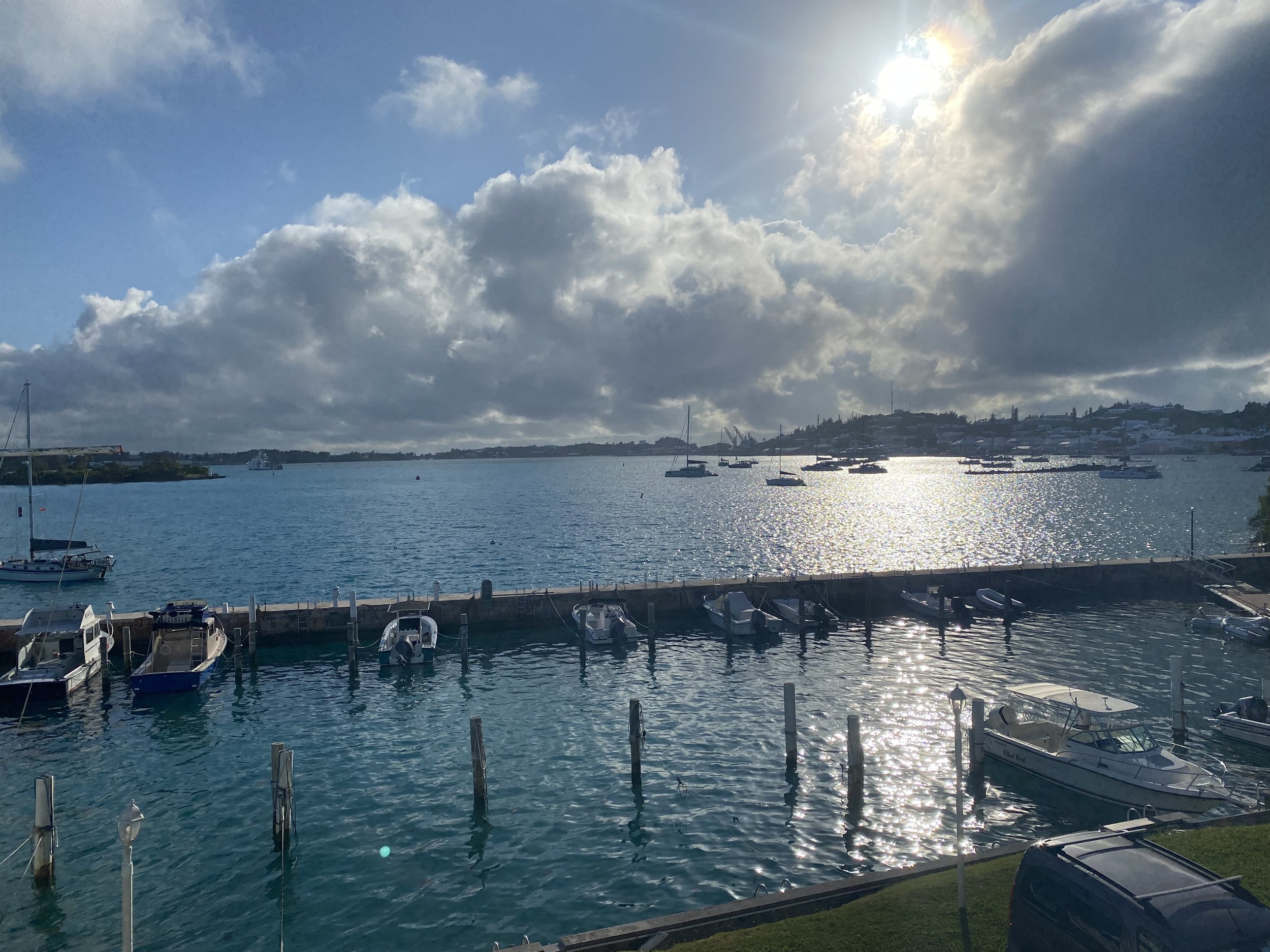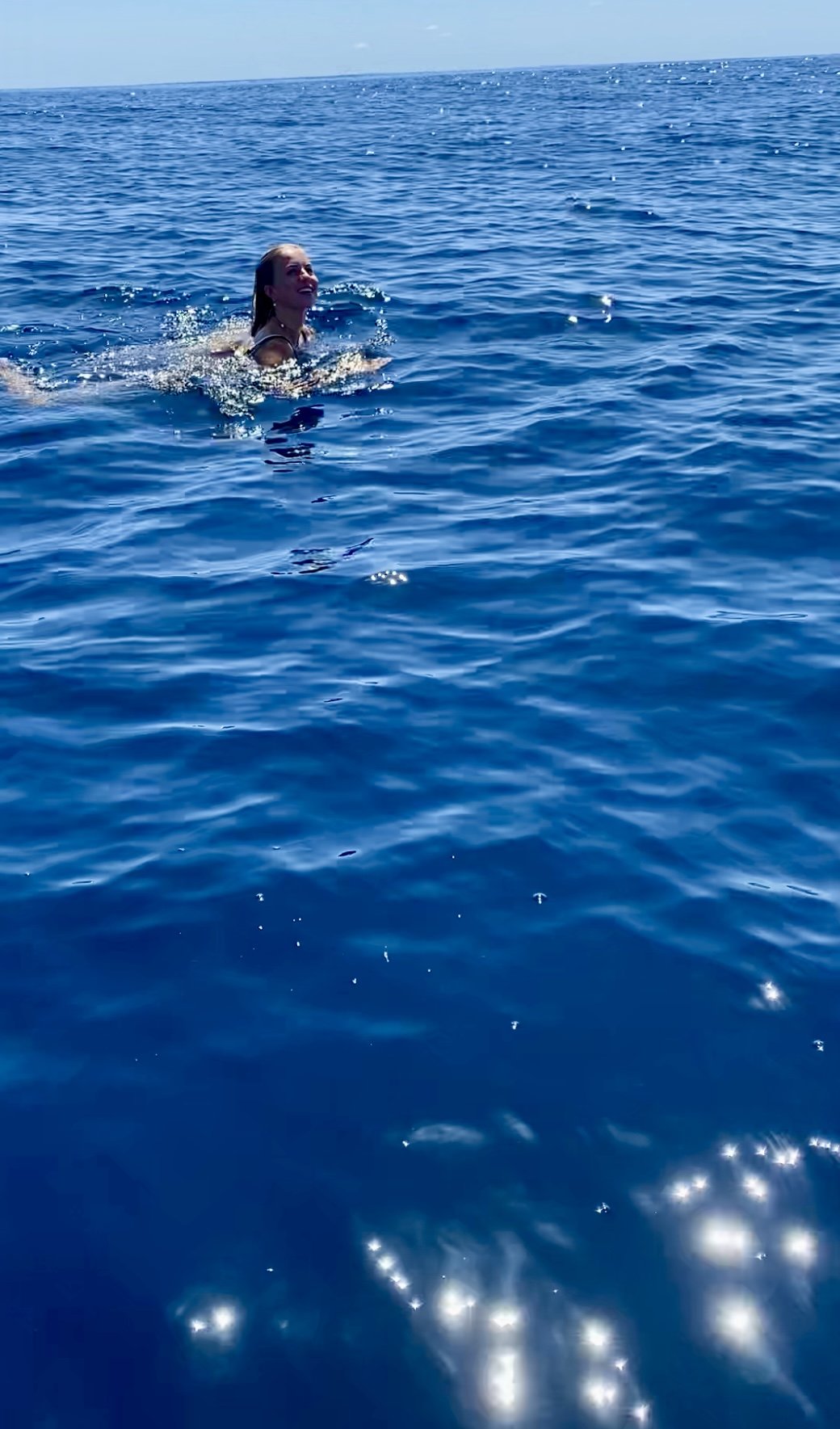Bermuda Triangle, Azores High
Sailing eastbound.
A biting easterly wind blows against us at 27 knots. Asja shoots through high, steep waves. When the bow hits the water, it feels like we're hitting concrete. Anything that isn't tied down flies across the saloon. But that’s not enough: our coffee pot crashes out of its ocean-going hangers. A couple of books fall from their small shelf.
For days, the sea confronts us as we head east. We no longer frequent the foredeck, unless it’s necessary. And there aren't enough handholds below deck to hold on to. The North Atlantic is an experience, but fun is something different.
Our routes across the Atlantic. The westward journey is much easier sailing-wise. Source: Noforeignland.
The return trip from the Caribbean to Europe is not for every sailor. Out of the crews we met in the Caribbean, it's mostly the Germans who return. There are plenty of alternatives: those who can afford it (as it comes to time, job, finances, family…) and want more adventure move on to the Pacific. Others dock their boats in Grenada or the ABC Islands for hurricane season and spend a season or more in the Caribbean afterwards. Or they have bought their Outremer specifically for the trip and hope to sell it in the BVIs, Bahamas, or the USA.
Estimates in the sailing community confirm my impression: While 1,500-2,000 yachts cross the Atlantic westward every year, only around 1,000 vessels sail in the opposite direction.
The joys of the westbound passage, sailing for weeks gently pushed by trade winds, are not a thing on the return trip. When we set off from the Bahamas, we only have 700 miles ahead of us. But the ideal route doesn't count much in the North Atlantic. We tack until we can't stand the word "re" anymore, zigzag through breaking waves, and cover a distance of 1,000 miles in the Bermuda Triangle.
This dreaded area between Miami, Bermuda, and San Juan has a reputation for "swallowing" ships and aircraft. Sudden storms and a patchwork of currents make shipping difficult.
The last major disaster occurred in 2015, when the freighter SS El Faro, carrying 33 people and nearly 400 containers of consumer goods destined for Puerto Rico, ran into distress at sea. While other ships adjusted their routes due to Storm Joaquin, Captain Michael Davidson was under time pressure and wanted to avoid it by going south.
Conditions were more severe than expected. The SS El Faro was listing 10-15 degrees to port when water began pouring in through a damaged porthole on the morning of October 1. At 7:13 a.m., First Officer Danielle Randolph sent out distress calls, but the ship stood no chance: The SS El Faro sank near the Bahamas. There were no survivors. In one of the deepest searches in maritime history, a dive computer retrieved the black box from the wreck – at a depth of more than 4,500 meters.
Fortunately, our journey doesn't get dangerous. We're traveling during a safer time. But we're still happy when we reach St. George, Bermuda. The border guards check us in at 9 p.m.
Destination: St. George, Bermuda…
… and Horta, Faial.
On the next leg, Bermuda - Faial / Azores, we suddenly need all of our hats and jackets. Long before sunset, the cold creeps into the cockpit. We catch colds. And move our night watches indoors. We also stop tacking at night.
We learn that seagulls take our fishing lures and how difficult it is to free a bird from the hook. That a few days of extreme heeling at 20-30 knots put a damper on everyone's mood. Waves wash nonstop over the bow, over the teak deck, the Asja is encrusted with salt and glistens when the sun shines.
One evening, we leave the genoa 70% out and, as the wind picks up, we get a rip. This rip widens as we continue sailing. The North Atlantic takes its toll on the equipment.
I'm not a "salty sailor," but rather someone who enjoys traveling the world on a ship. This shows in how much I enjoy it as we get stuck in a wind hole. After days of strong winds, we head to the other extreme… the edge of the Azores High: a high-pressure system that feels like being trapped under a giant bell jar. Temperatures are rising. No breeze is moving anymore.
With a maximum speed of 1.5 knots, we almost stand still. But the slowness offers an opportunity: now we can swim in the open sea (which would have been too risky before). We let a rope hang from the bathing platform and jump into the endless lapis blue, one after the other.
The ocean surrounds us like a carpet of satin. It feels like there is a thousand miles in all directions. Especially downwards. Here, in the Atlantic deep-sea channel, it might be 5,000 meters until one reaches the ocean floor. What is beneath us and roams the ocean remains invisible and that is how it should stay. We only swim for a short time and it feels both scary and magnificient at the same time.
Open waters, Azores High.
Highlight number two: On the eastbound trip, the North Atlantic is teeming with dolphins. It literally does, as they leap out of the water as if practicing high jumping or long jumping. They jostle in front of our ship, surf the bow wave and lift our spirits whenever they appear.
We also see a few whales, most recently a fin whale so large that you can get a cup of coffee between the time its dark back appears and the time its dorsal fin is visible.
It takes us 9 days to travel to St. George, Bermuda. Thirteen days and a half days to Horta (Faial), and 6 days to travel from Porta Delgada (San Miguel) to Lagos, Portugal. Including the stops on land, we spent 42 days cruising the North Atlantic. And this number, of course, is the answer to all questions :-)
We meet a lot of dolphins - and an occasional whale.
We can smell land before we see its first lights. As we approach Sagres Bay at dusk shortly after 9:30 a.m. on May 28th, a warm breeze caresses our noses. It's heavy with essential oils, the maquis covering the coast, lavender, and rosemary.
The anchor drops. Stella mixes us a mooring drink, and we can hardly believe we've reached the mainland. No more alarms for the night shift. No more eating from cereal bowls because everything spills out of the plates. No more hoisting a leeward sail because we can't use half of our beds. No more rationed showers. No loneliness enveloping us, except for the quota freighter during the day that approaches us within 3 nautical miles.
We have conquered the North Atlantic as a family, without a crew. After this experience, almost nothing can scare us.
We have arrived in Lagos.







